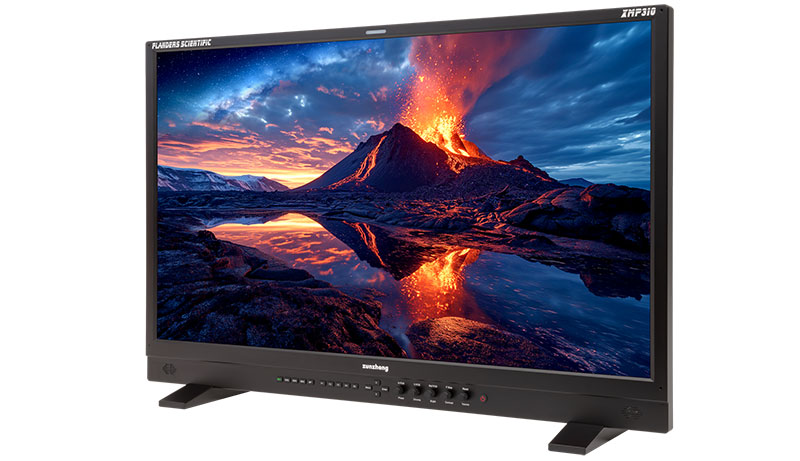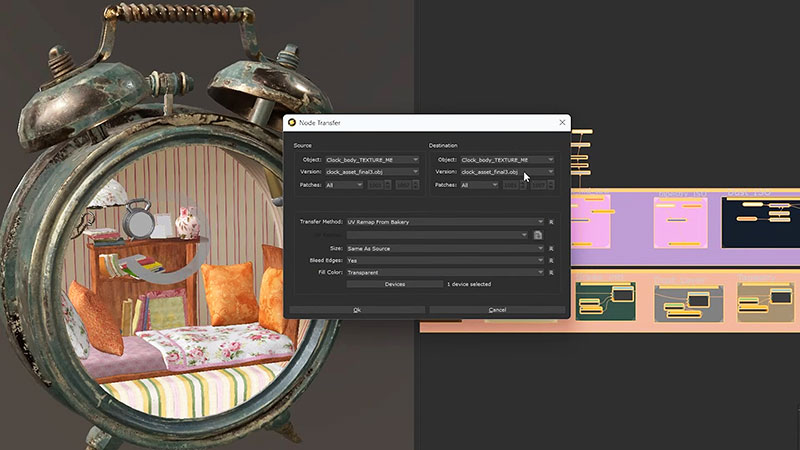Flanders Scientific’s new UHD 31.5in XMP310 QD-OLED reference display for HDR and SDR achieves 1,000 nits brightness, 1.5 million:1 contrast and a very wide colour gamut.

Flanders Scientific has released a new model in the XMP Series monitor lineup, the 31.5in UHD XMP310, suitable for use as a QD-OLED HDR and SDR reference display. The XMP310 achieves 1,000 nits peak luminance, 1.5 million:1 contrast and a very wide colour gamut to meet HDR and SDR monitoring needs, with off-axis viewing performance that remains consistent from any viewing position.
Traditionally, achieving display consistency between 31-inch mastering displays and larger format screens has been difficult owing to the use of different display systems at these sizes. However, the XMP series overcomes this challenge through the use of the same QD-OLED panel system, driven by the same colour management system. This continuity promotes interoperability within and across monitoring environments from production to post, as well as their usefulness for DPs, DITs, editors, colourists and clients.
Flanders Scientific monitors all come pre-calibrated from the factory. The XMP310 also features volumetric Auto Calibration, which makes it easier to recalibrate the display over time. When a supported probe is plugged into the monitor, the automated calibration routine profiles the monitor and uses volumetric data to target various available colour management options. Without requiring a computer, 3D and 1D LUTs are calculated and saved on the fly as management options are selected, resulting in a single, complete calibration process.
The XMP310 is also compatible with 3rd party calibration systems including Calman and ColourSpace, making it possible to perform custom 3D+1D LUT-based calibration.

Incoming single-link 4K or UHD signals can be converted to 2K or HD outputs for downstream HD monitors or scopes without using standalone down conversion equipment.
The XMP310 is RGB additive for white, and bright enough to qualify it for use as a HDR Program Mastering monitor. While OLED systems in general all feature a very dark black level, a common challenge occurs as the image progresses out of black. Many OLEDs exhibit a black crush or black jump behaviour that causes inaccurate reproduction of shadow detail.
The QD-OLED panel is emissive with per-pixel luminance control, giving it a performance advantage over both full-array local dimming (FALD) and global dimming LCD based monitors, which have a zoned and modulated backlight design. FALD LCDs may obscure highlight detail due to backlight zone flaring, or compromise shadow detail and black levels due to halation. Colour shift or flicker may occur with fast moving bright objects, and scene cut errors can result from differing rise/fall (turn-on/turn-off) times for the LED backlight phosphors.
While the amount of halation can vary considerably between FALD LCDs, Flanders Scientific notes that all screens built on this systems are likely to show some degree of raised black levels and haloing when rendering a high contrast image – reference grade HDR displays need to be able to accurately produce high, simultaneous contrast between the brightest and darkest portions of an image.
XMP series monitors automatically read payload ID (VPID) information embedded in SDI signals and configure the monitor’s SDI Format mode for proper support of 4:4:4 or 4:2:2, 10 or 12bit, and RGB or YCbCr signals. This information can also be temporarily displayed whenever a format change is detected
The XMP310 is also capable as an SDR monitor. Its brightness and other HDR capabilities do not sacrifice the performance criteria of an SDR monitor. Durable and lightweight, the XMP310 performs in a grading suite, and is practical to bring on set since it can be powered from 24V 3 PIN XLR. It is built in an all metal chassis, and weighs 8kg.
The XMP310 will start shipping in early 2024. www.flandersscientific.com




















